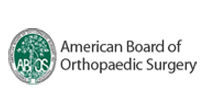Patient-Reported Outcomes and Factors Impacting Success of the Periacetabular Osteotomy
Hip dysplasia is a condition affecting both infants and adults, characterized by a shallow acetabulum that does not sufficiently cover the head of the femur. This leads to instability of the hip and elevated levels of mechanical stress around the acetabular rim. A popular procedure for the correction of hip dysplasia is the periacetabular osteotomy (PAO), in which fluoroscopically guided osteotomies around the pelvis are made to allow for repositioning of the acetabulum to fit properly on the femoral head. This systematic review aims to analyze patient factors that impact outcomes, as well as patient-reported outcomes such as the Harris Hip Score (HHS) and the Western Ontario and McMaster Universities Arthritis Index (WOMAC).













